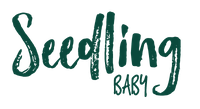$13.95 FLAT RATE SHIPPING | FREE OVER $160 AU WIDE
$13.95 FLAT RATE SHIPPING | FREE OVER $160 AU WIDE

Night Nappy FAQs
June 05, 2021 3 min read
It’s the age-old question. Or rather, question-s.
Can’t I just boost my day nappies?
Do I really need a dedicated night nappy?
When should I make the switch?
How much absorbency should I be looking for?
What happens if I get leaks?
Here are the answers to our most frequently asked night nappy questions.
Can’t I just boost my day nappies?
Many parents have success with our nappies at night until about 6 months after which they find they need a specific night solution. There’s only so much you can boost a pocket nappy with before you’ll get gaps at the legs where it could leak, so just be mindful of that, and then once you feel the day nappies are no longer cutting it for night, it’s time to make the switch to a dedicated night nappy.
Do I need a dedicated night nappy and if so, when should I make the switch?
Once you’ve boosted your day nappies to capacity and find they’re no longer comfortable for bub or just aren’t cutting it in terms of absorbency, it might be time to look at a dedicated night nappy, or at least to mix and match. It’s often not as simple as buying three specific night nappies and sitting back to enjoy dreamy nights for the next two year. While it can be that simple, many parents find it takes a bit of tweaking, trying different things and a bit of mix and match to find the right solution for your baby, which incidentally will probably be completely different for your next baby!
I don’t want to pay $40+ for a dedicated night nappy. What are my options?
There are some amazing dedicated night nappies on the market, but if they’re outside your budget or you just want something that can be used in other ways, a prefold/flat and cover option might be for you. These can be used as nappies while your baby needs them and then used as household rags later on. The covers can be passed along to another family.
Prefolds and flats can be folded as desired and boosted even further on the outside but they will require a stay-dry layer next to your baby’s skin. Suedecloth and microfleece are great reusable options that draw moisture away from baby and into the absorbent layers but still feel dry to touch.
If you’re using a prefold/flat option and your baby moves around a lot, you might be best to go with a wool cover as these provide coverage where PUL often doesn’t – top of the thighs and high up the waist.
A fitted nappy is another option that can be boosted on the outside so you won’t be compromising leg gaps.
Here's a look at how you can use 2 Diversifold+ prefolds with a Cómodo Wrap+ for children aged over 5 years. It's not shown in the picture, but we also use a couple of microfleece liners to draw moisture away from her skin.

What about pull-ups?
In our experience, pull-ups are perfect for kids who need accident coverage. They’re almost completely trained at night, so they definitely don’t want to be in a nappy, but sometimes they have an oopsie and they just need some protection for those times. In addition to a pull-up, you can also use a mattress protector.
What if I get leaks?
If you’re experiencing leaks, it’s either because there’s not enough absorbency, your baby has “flooded” the nappy too quickly for it to absorb or there are gaps. You’ll know if it’s an issue of insufficient absorbency as the nappy will be soaked. If that’s not the case, check there are no gaps. If that’s all good, a sudden flood could be the culprit and I’m afraid that even if there were no gaps that you noticed, a flood can still find somewhere to escape.
While fabrics like bamboo, cotton and hemp hold a huge amount of fluid, they can take a while to soak things up, so try using a microfibre layer on top of your other absorbent parts as microfibre sucks up fluid rapidly and is great for containing flooding (just remember microfibre shouldn’t go directly against the skin).
Once baby is turning over by themselves, monitor the way they tend to sleep. If they’re a tummy sleeper, they may need more boosting at the front than back or side sleepers.

Are Reusable Nappies More Environmentally Friendly than Disposables?
April 24, 2024 1 min read

3 Ways to Reduce the Outlay of Starting Cloth Nappies
April 23, 2024 2 min read

Cloth Nappy Council Rebates 2024
April 05, 2024 4 min read
